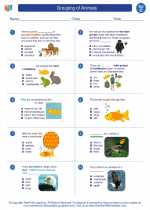Nylon
Nylon is a synthetic polymer that was first developed in the 1930s as a substitute for silk. It is a versatile material with a wide range of applications due to its strength, flexibility, and resistance to wear and tear.
Properties of Nylon
Nylon has several important properties that make it useful in various industries:
- Strength: Nylon is known for its high tensile strength, making it suitable for use in products that require durability, such as ropes and fishing lines.
- Flexibility: It is a flexible material, which allows it to be used in the production of textiles, including clothing and carpets.
- Resistance: Nylon is resistant to abrasion, chemicals, and heat, making it a popular choice for applications in engineering and manufacturing.
- Low friction: It has a low coefficient of friction, making it suitable for use in mechanical parts like gears and bearings.
Uses of Nylon
Nylon is used in a wide range of products and industries, including:
- Textiles: Nylon is a popular material for making clothing, hosiery, and undergarments due to its strength and flexibility.
- Industrial applications: It is used in the manufacturing of ropes, conveyor belts, and tire cords due to its high tensile strength and resistance to abrasion.
- Engineering: Nylon is used in the production of mechanical parts, such as bearings, gears, and bushings, due to its low friction properties.
- Consumer goods: It is used in the production of everyday items such as toothbrush bristles, luggage, and umbrellas.
Environmental Impact
While nylon has many useful properties, it is important to consider its environmental impact. Nylon is not biodegradable and can take hundreds of years to decompose, leading to concerns about its contribution to plastic pollution. However, efforts are being made to develop more sustainable alternatives, such as bio-based and recycled nylon.
Study Guide
Here are some key points to remember when studying nylon:
- What are the properties of nylon?
- What are the main uses of nylon in different industries?
- What are the environmental considerations associated with nylon?
- How does nylon compare to natural materials such as silk and cotton?
Understanding the properties, uses, and environmental impact of nylon will help you appreciate its significance in various fields and its role in the ongoing conversation about sustainable materials.
.◂Science Worksheets and Study Guides Third Grade. Grouping of Animals

 Activity Lesson
Activity Lesson
 Worksheet/Answer key
Worksheet/Answer key
 Worksheet/Answer key
Worksheet/Answer key
 Worksheet/Answer key
Worksheet/Answer key
 Worksheet/Answer key
Worksheet/Answer key
 Vocabulary/Answer key
Vocabulary/Answer key
